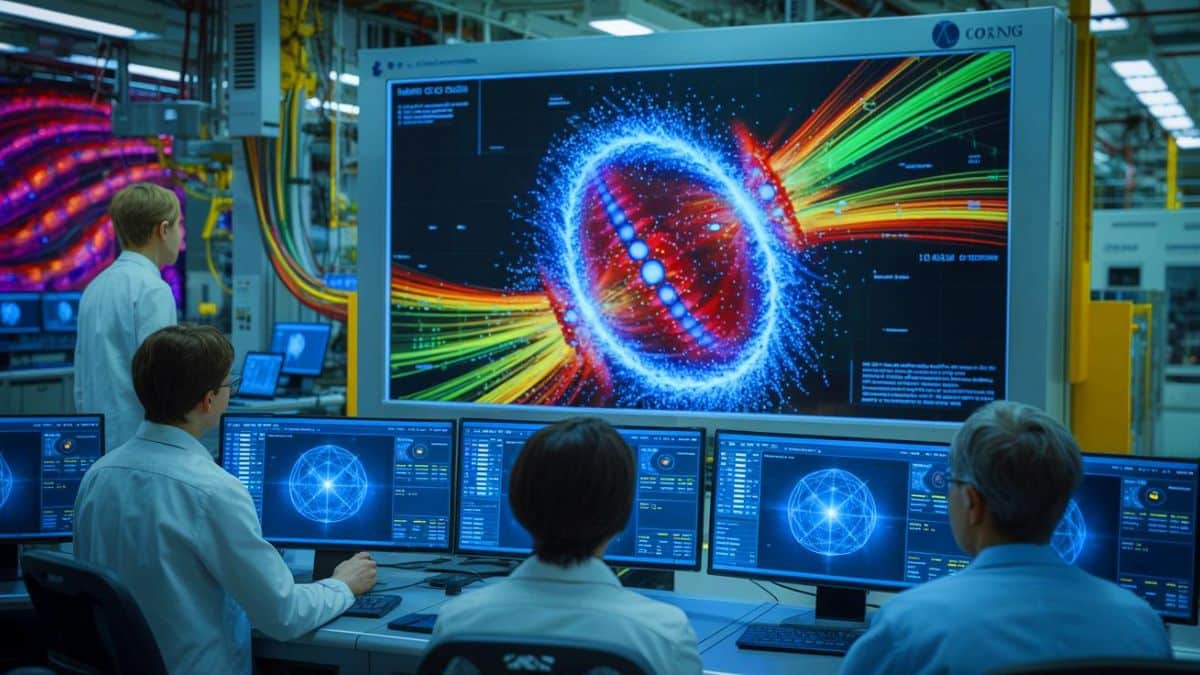In a landmark development at CERN, artificial intelligence has revolutionized how scientists study the elusive Higgs boson. This groundbreaking approach has unlocked new potential for understanding the fundamental particle’s interaction with charm quarks, offering unprecedented insights into the mechanics of mass generation in our universe.
How AI transforms Higgs boson research
The integration of advanced artificial intelligence systems at CERN’s Large Hadron Collider (LHC) marks a pivotal shift in particle physics research. Scientists at the Compact Muon Solenoid (CMS) experiment have harnessed AI to tackle one of the field’s most complex challenges: observing and analyzing the Higgs boson’s interaction with charm quarks.
These interactions present extraordinary difficulties for traditional detection methods. When a Higgs boson appears alongside top quark pairs and subsequently decays into quark pairs, the resulting signals are nearly indistinguishable from background collision events. The challenge is compounded by the nature of quarks themselves, which manifest as dense sprays of hadrons (jets) rather than distinct particles.
Sebastian Wuchterl, PhD, a research fellow at CERN, explains: “This required us to completely rethink our analytical approach. The subtleties of charm quark detection demanded a technological breakthrough.”
The solution came through innovative graph neural networks that process each jet as an interconnected particle network. This approach allows the AI to identify subtle structural patterns unique to charm quark decay signatures that would remain invisible to conventional analysis methods.
| AI Technology | Application in Higgs Research | Key Benefit |
|---|---|---|
| Graph Neural Networks | Charm quark jet identification | Pattern recognition in particle networks |
| Transformer Networks | Signal/background differentiation | Whole-event analysis capabilities |
| Machine Learning Algorithms | Charm-tagging | Enhanced precision in data analysis |
Breakthrough technologies powering the discovery
At the heart of this scientific advancement lies a repurposed transformer network—technology similar to what powers sophisticated AI language models. By adapting this architecture for particle physics, researchers have created a system capable of analyzing entire collision events and isolating those featuring Higgs bosons decaying into charm quarks.
The charm-tagging algorithm represents a technological marvel in its own right. Trained on hundreds of millions of simulated jets, this AI system dramatically improves identification accuracy. The algorithm’s ability to discern intricate data patterns enables scientists to explore previously inaccessible aspects of the Higgs boson’s behavior.
Key advancements that made this breakthrough possible include:
- Enhanced particle jet analysis through deep learning architectures
- Pattern recognition systems trained on massive simulation datasets
- Signal processing algorithms capable of filtering quantum-level noise
- Cross-disciplinary application of AI language model principles
Reshaping our understanding of mass and matter
The implications of this AI-powered breakthrough extend far beyond technical achievement. The Higgs boson serves as the force-carrying particle of the Higgs field—the theoretical construct responsible for granting mass to elementary particles. While its discovery in 2012 confirmed interactions with heavier third-generation quarks (top and bottom), understanding its relationship with second-generation quarks like charm has remained elusive.
With these new precision limits established on the Higgs boson’s decay into charm quarks, scientists have taken a significant step toward comprehending the mechanics of mass generation. This advancement not only strengthens the Standard Model of particle physics but also creates new avenues for exploration beyond current theoretical frameworks.
The precision achieved through AI analysis may ultimately reveal discrepancies between observed phenomena and theoretical predictions—precisely the kind of inconsistencies that could point toward new physics. As researchers continue refining these techniques, we move closer to answering fundamental questions about the universe’s composition and behavior.
The integration of human scientific expertise with machine learning capabilities demonstrates how interdisciplinary approaches can overcome seemingly insurmountable challenges. As AI systems continue evolving, their application in experimental physics promises to yield even greater insights into the fundamental workings of our universe—potentially redefining our understanding of reality itself.







